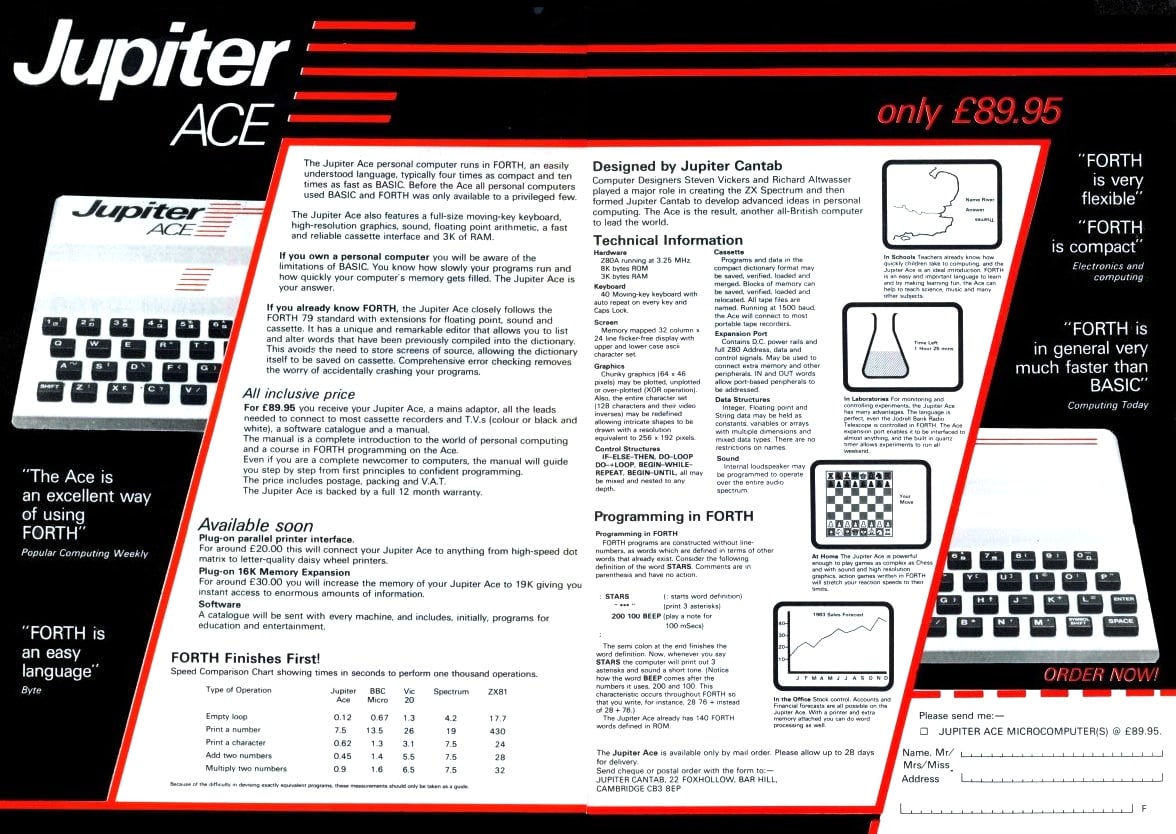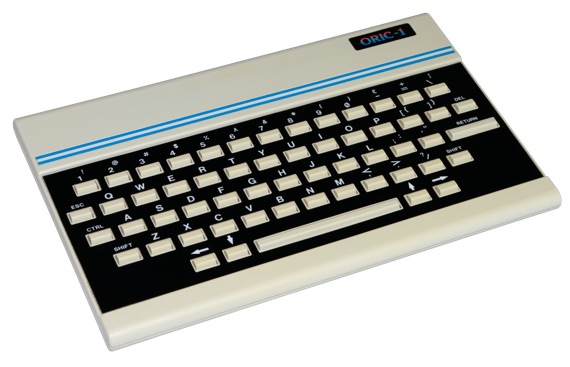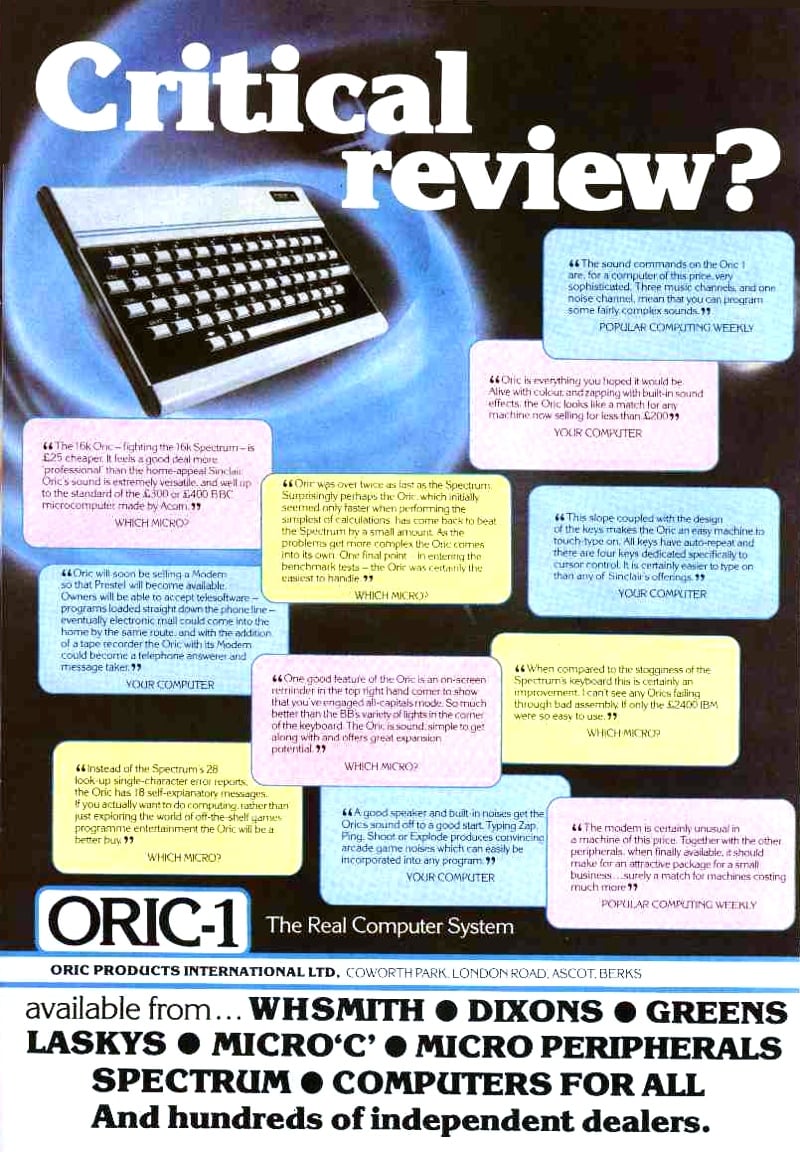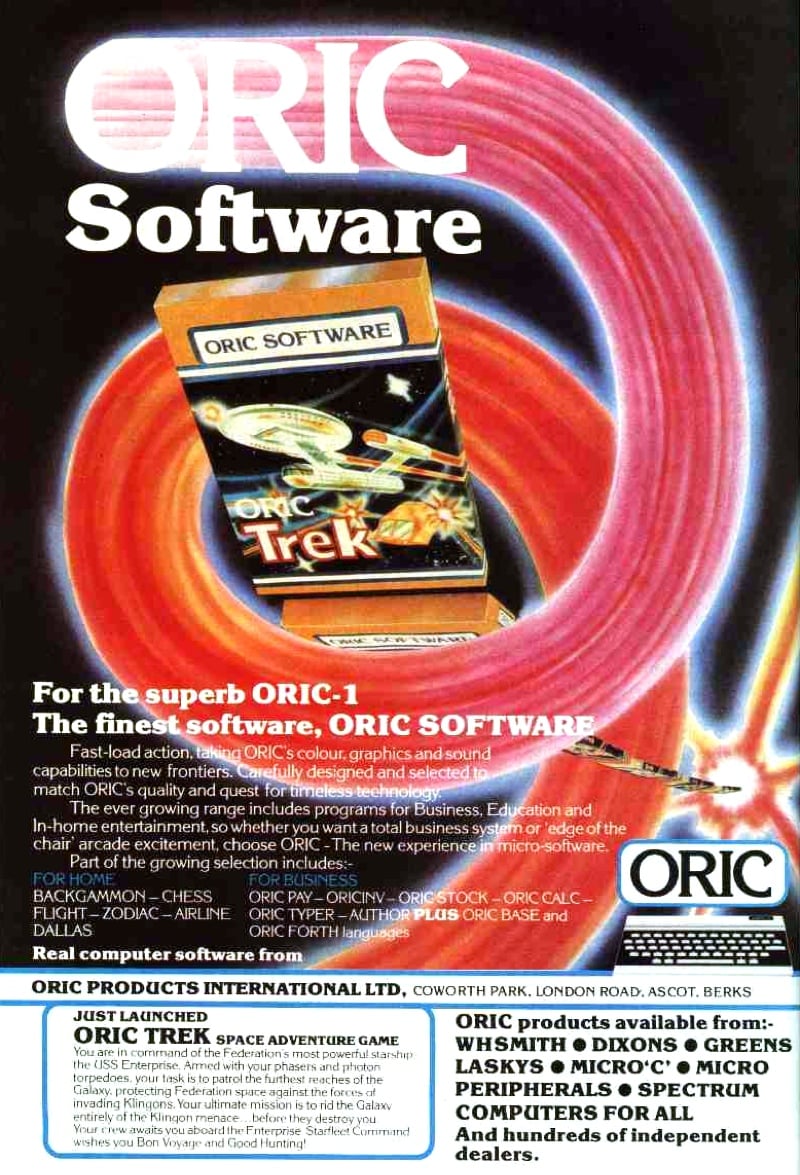This article is more than 1 year old
Twelve... classic 1980s 8-bit micros
6502 and all that
Jupiter Ace

With the designer of the Sinclair ZX Spectrum's electronics and the writer of Sinclair Basic behind it, you'd have thought the Jupiter Ace couldn't fail to succeed.
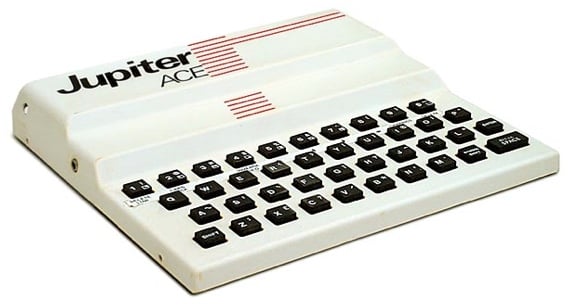
But Ricard Altwasser - the hardware guy - and software wizard Steve Vickers made two mistakes. In place of the then increasingly well known Basic programming language, they implemented "revolutionary microcomputer language" Forth. That appealed to an emerging group of programming nerds, but for the bigger gang of schoolkids keen to hack micros, it wasn't a language they spoke.
And while the 3.25MHz Z80A, 1KB Ram-based Ace was a cheap £89.95, it was a black-and-white machine at a time when all its key rivals were colour, even the Spectrum, which the two had just completed.
Launched in the autumn of 1982, the Ace was followed in 1983 by the Ace 4000, which featured a slightly redesigned case and motherboard. The Ace 16+ - a regular Ace plus a 16KB Ram pack - was announced in the summer of 1983, but it wasn't enough to stop the company collapsing the following November.
Price £90
CPU Z80A @ 3.5MHz
Memory 3KB
Developers Richard Altwasser and Steve Vickers
Oric-1

Developed by Tangerine Computer Systems offshot Oric Products International, the Oric was intended to compete head-to-head with the Sinclair Spectrum by offering a BBC Micro-level Basic and audio experience in the familiar compact, "pregnant calculator" form-factor.
Inside sat a 1MHz 6502A CPU and 16KB or 64KB of Ram, though the latter reserved 16KB to hold a copy of the Basic interpreter, so it was marketed as a 48KB machine - a rare instance in the IT biz of being totally honest with the specifications.
It was a good machine, but it didn't pull in the punters. It's estimated that some 160,000 sold in the UK, and 50,000 in France. When the Oric 1 production facility burned down in October 1983, it seemed like the end had come.
But Oric struggled on, now with a new owner, Edenspring, releasing a follow-up machine, the Atmos, in 1984. In February 1985, Edespring pulled the plug. Oric was then acquired by French firm Eureka, keen to maintain the machine's Gallic fanbase. It released the Stratos that year and the Telestrat the next, only to shut up shop in 1987.
Price £129 (16KB) £169 (48KB)
CPU 6502A @ 1MHz
Memory 16KB or 64KB (48KB usable)
Developers Paul Johnson
